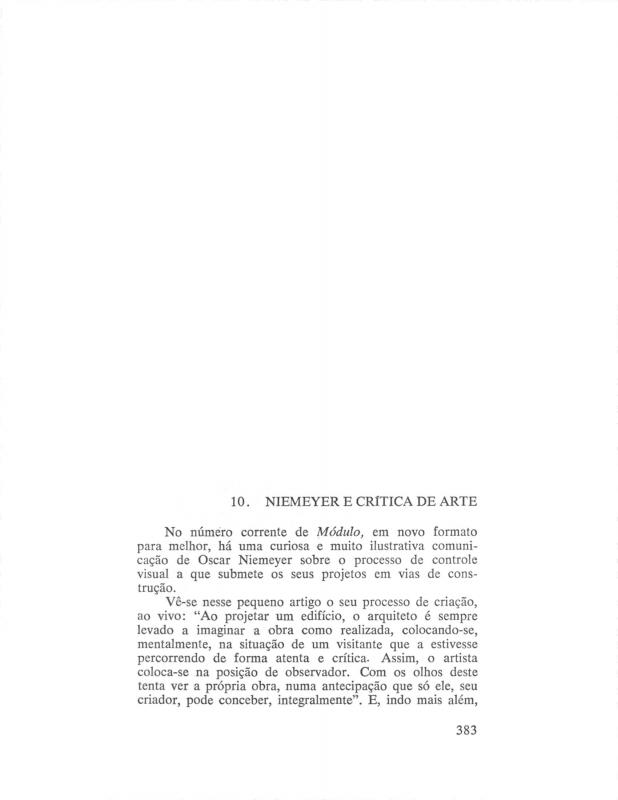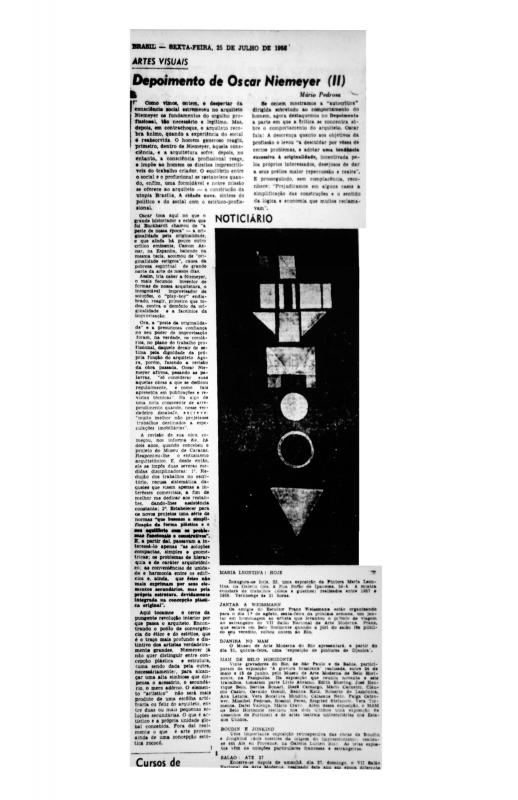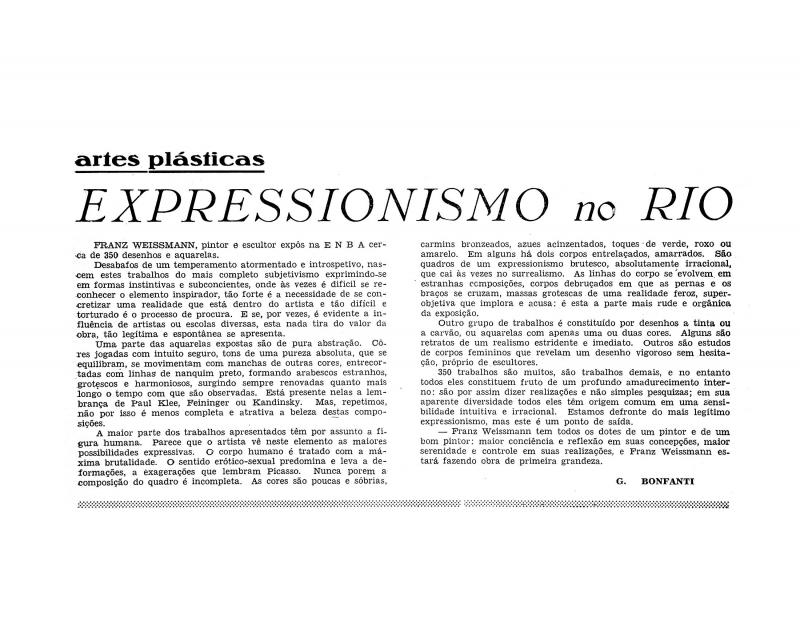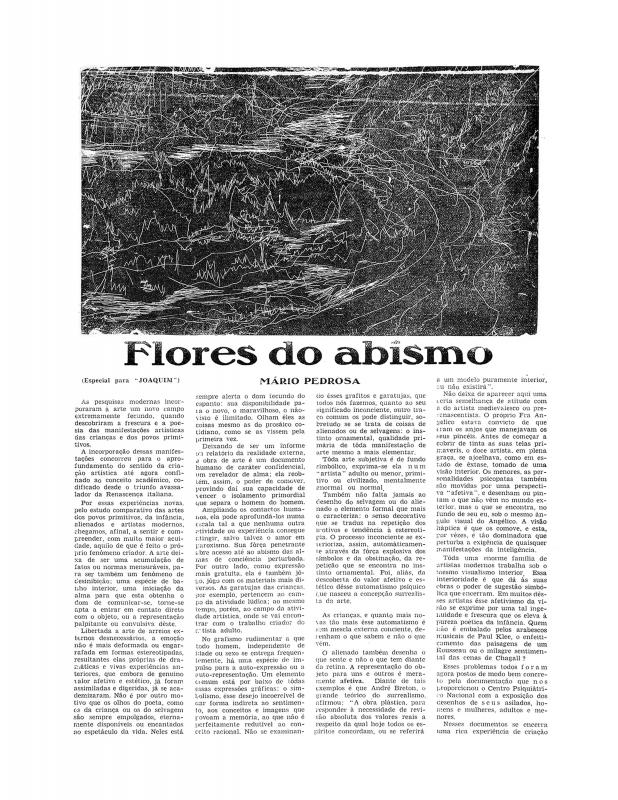In this text published in the magazine Joaquim, Niemeyer explains the importance, in Brazil, of architectural projects that develop forms bound to the possibilities provided by modern methods without eschewing the country’s history of baroque architecture. He warns of the urgent need to come up with “master plans” to regulate and restrict the chaotic growth of the country’s large cities. Urban planning must be informed by theories that consider “complementary” social measures, among them low-cost housing. It is essential to “ensure that our architecture heeds the key human element,” whether projects are designed for the rich or for the poor. [For further reading, see in the ICAA digital archive by Mário Pedrosa “Niemeyer e crítica de arte” (doc. no. 1086699); and “O depoimento de Oscar Niemeyer – II” (doc. no. 1086654)].
The magazine Joaquim was published in Curitiba, capital of the state of Paraná, from 1946 to 1948; its directors were writer Dalton Trevisan (a young man at the time), Antonio P. Walger, and Erasmo Pilotto.
[For other essays published in Joaquim, see G. Bonfanti’s “Expressionismo no Rio” (doc. no. 780855); Mario Pedrosa’s “Flores do abismo” (doc. no. 780902); Carlos Drummond de Andrade’s “Invencionismo” (doc. no. 777307); Edgard Bayley’s “Manifiesto invencionista” (doc. no. 777253); and Erasmo Pilotto’s “Poty e a prata da casa” (doc. no. 781252)].







